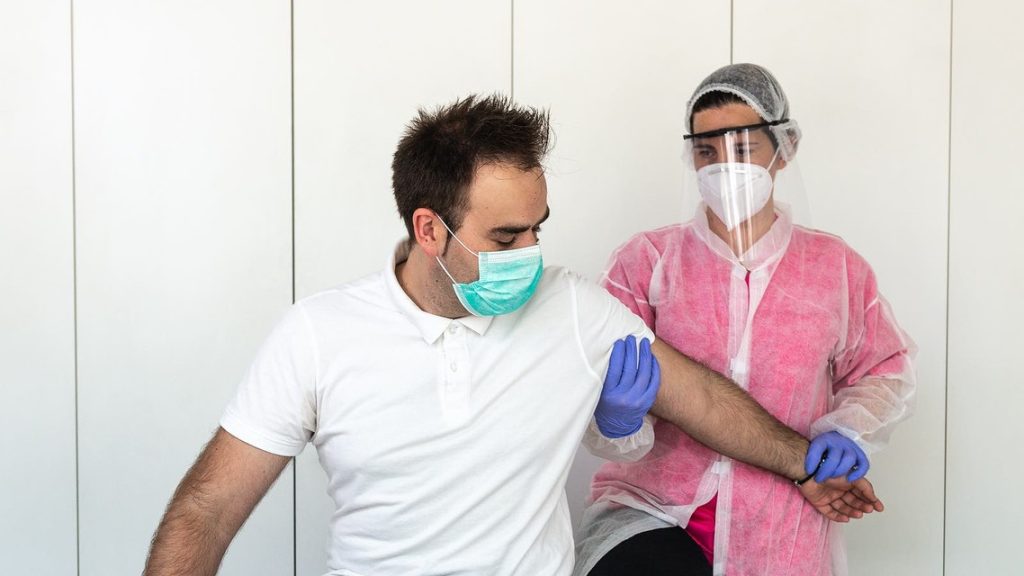Physical therapy in covid-19 plays a vital role in the recovery of individuals affected by COVID-19. Physical therapy is a vital component of the healthcare system and it can be challenging to continue with physical therapy sessions during a pandemic such as COVID-19. However, many physical therapists have adapted to this challenge by offering virtual sessions over video conferencing platforms or by taking extra precautions to ensure safety during in-person sessions.
Physical therapists may also provide patients with exercises and stretches they can do at home, rather than rely on equipment that is not available or sanitized during the pandemic. Physical therapists also play an important role in helping patients recover from the long-term effects of COVID-19, such as those who have experienced prolonged ICU stays or have been on ventilators.
Physical therapy in covid has numerous benefits, including practical exercises and good body mechanics. It helps improve performance, recover from injuries, and manage persistent pain. In this post, we will examine the benefits of physical therapy and provide tips for maximizing your success. Read on to understand why physical therapy is necessary for better health and fitness.
Why Is Physical Therapy Necessary?
Physical therapy plays an important role in the recovery of individuals who have been affected by COVID-19. The virus can cause a range of respiratory and neurological symptoms that can lead to decreased muscle strength, endurance, and mobility.
Physical therapy in covid can help individuals regain their strength and mobility, improve their lung function, and reduce the risk of developing secondary complications such as blood clots. In addition, physical therapy can also help to manage the psychological effects of COVID-19, such as anxiety and depression. It can improve overall quality of life and increase the chances of returning to work or normal daily activities.
Physical therapy aims to restore the patient’s full range of motion through specially designed exercises. It promotes better healing and productivity, decreasing the probability of sustaining the same injury twice.
Physical therapy encompasses numerous sub specializations. A physical therapist can utilize various materials and strategies from each category to build an individualized program for you. There are numerous physical exercises, patient education, and manual therapy.
Physical therapists work to improve or restore their patients’ motor skills and quality of life. Other objectives include reducing suffering and preventing further harm. Let’s look at the benefits of physical therapy discussed below.
Seven Benefits of Physical Therapy in Covid-19
Physical therapy is a type of healthcare that focuses on helping individuals improve their physical movement and manage their pain. It is often used to treat a wide range of conditions, such as sports injuries, arthritis, stroke, and spinal cord injuries. Some of the uses of physical therapy include: improving mobility, reducing pain and swelling, increasing strength and flexibility, and improving balance and coordination.

Physical therapy can be used as a standalone treatment or in conjunction with other medical treatments, such as surgery or medications. It is generally considered a safe and effective treatment option with few side effects. In addition to these benefits, physical therapy can also help individuals improve their overall quality of life and achieve their personal goals.
- Reduce the Pain
Therapeutic exercise and manual therapy treatments help relieve pain and improve muscle and joint pin after covid functions. Additionally, these treatments can also assist with pain management.
- Treats Neurological Conditions
Stroke, multiple sclerosis, Parkinson’s disease, and spinal cord injuries are all neurological illnesses treated by physical therapy treatments. Specifically, the training has been demonstrated to improve gait performance and walking capacity for up to six months.
According to the National Multiple Sclerosis Society, physical therapy in covid helps improve balance, coordination, flexibility, aerobic endurance, fatigue, and respiratory function. When you incorporate exercises into a comprehensive diabetes management plan, you can easily control your blood sugar levels.
Besides, people with diabetes may have problems with foot and leg sensations. Physical therapists provide proper foot care and educate these patients to prevent future complications.
- Reduce the Negative Effects
Symptoms of rheumatoid arthritis and osteoarthritis include joint inflammation, discomfort, soreness, swelling, and stiffness. In contrast, physical treatment can reduce symptom severity and enhance the quality of life.
Physical therapy enables patients to regain a complete range of motion in their compromised joints, strengthen their bodies to support their joints better, and maintain their fitness.
- Reduces Pelvic Floor Dysfunctions
During pregnancy and childbirth, the pelvic floor muscles can endure significant stress. Menopause, abdominal surgeries, and other conditions affecting pelvic floor muscle tension also contribute to this issue. However, pelvic floor physical therapy (PFPT) helps mitigate pelvic floor dysfunctions to promote better mobility and flexibility.
- Reduce Recovery Time Following Surgery
Loss of motor abilities, and other functions is a typical consequence of a stroke. Physical therapists help stroke patients improve mobility to carry on with their daily activities.
Patients with pulmonary conditions may benefit from physical therapy by gaining strength, strengthening their bodies, and learning how to breathe more efficiently to remove fluid from the lungs while enhancing their quality of life.
- Manage Pain
Surgical intervention isn’t necessary if rehabilitation helps you recover from discomfort or overcome an injury. If you have balance issues, your therapist will offer exercises that gently but repeatedly test your equilibrium. Therapists also provide exercises to improve coordination and walking aids to enable more stable and pleasant mobility.
Now, let’s discuss the methods of maximizing physical therapy’s benefits in the next section.
Methods for Maximizing Physical Therapy’s Benefits
- Participate Actively
Active participation in your physical care is essential. Choose a physical therapist who is a good fit for you whenever feasible.
Then, bring any pertinent medical documentation from past doctor or healthcare provider visits to your first consultation. It is also helpful to jot down any questions or treatment goals before your meeting.
- Make Plans and Targets
Consider the treatment’s outcomes. The targeted results of the patients influence the treatment approach. That’s why you must make proper plans to accomplish good therapy results.
- Follow Through on Your Responsibilities
The exercises prescribed by physical therapists are intended to build muscular strength and joint mobility. They often require consistency over time to provide results. They can’t improve their health if they don’t take the required medications at specific intervals.
- Speak Up During Sessions
Some patients may brush off little discomfort or neglect to report it to their physical therapist because they view it as normal. However, the smallest details can frequently be the key to solving a complex issue.
Don’t be hesitant to ask questions. Physical therapists want to ensure that their patients’ concerns are alleviated.
- Adhere to PT’s Orders
After the physical therapy in covid from long covid clinics, a physical therapist may recommend additional measures to prevent future injuries, such as particular exercises, adjustments to equipment such as bicycle set-up, and an examination of the patient’s running stride.
- Don’t Skip
When a patient is in pain, they may delay seeing a physician. Physical therapists have specialized training to assess and treat pain. They can adapt their therapies to meet patients’ unique needs on any particular day.
Wrapping Up
Physical therapy in covid plays a crucial role in the recovery of individuals who have been affected by COVID-19. It can help to address a range of symptoms caused by the virus, including respiratory and neurological issues, as well as psychological effects.
Physical therapy in covid interventions can improve muscle strength, endurance, mobility, lung function, and overall quality of life, and can reduce the risk of secondary complications. With the right physical therapy plan, patients affected by COVID-19 can make a full recovery and regain their ability to participate in their daily activities. It is crucial that people with symptoms of coronavirus or have been diagnosed with the virus to get an assessment from a physical therapist to develop an individualized plan to regain their pre-illness level of function.






